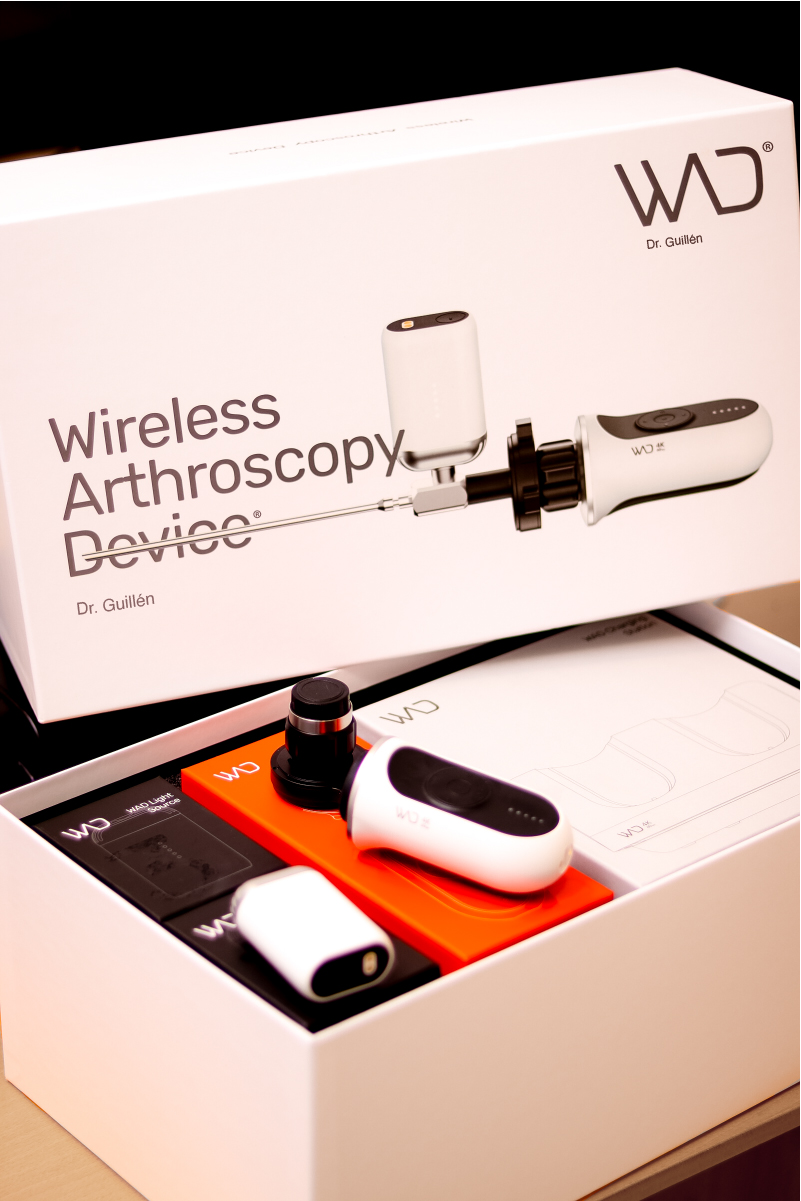Dr. Pedro Guillén develops the second generation of the WAD®, the wireless arthroscope
Dr. Pedro Guillén has launched the second generation of the WAD® Dr. Guillén wireless arthroscope. This device, which he patented in 2007, enables cordless arthroscopy operations, making it possible to perform interventions in doctors' surgeries, field hospitals, emergency situations and disadvantaged regions with scarce health resources, as well as stables and farms. The technological consultancy firm Izertis has been in charge of providing the engineering resources necessary for the technological development of the WAD®.
The second generation WAD® Dr. Guillén, whose commercialisation and use is aimed solely and exclusively at healthcare professionals, consists of a wireless ultra high definition camera, capable of working at a resolution of up to 4K and 60 FPS (frames per second), a light source, also wireless, and a charging station. The device allows cordless arthroscopy operations, enabling cost-effective and safe interventions from locations where there is no power supply, such as field hospitals, farms and the like.
Dr. Pedro Guillén, who introduced arthroscopy in Spain in 1976, and Founder and President of Clínica CEMTRO, patented in 2007 the first generation of the WAD® Dr. Guillén, which was born out of the need to simplify the arthroscopy technique in operating theatres, "eliminating the servitude of cables" and thus reducing "the number of postoperative infections". The device has evolved into this second generation which has just been licensed for marketing by the Health Authorities.

Thanks to this advance, the use of elements that leave the arthroscopic surgical field is eliminated, thus "drastically reducing a potential source of contamination and infection, as it avoids the need for a conventional light source, fibre optic cables, video cables and arthroscopic towers," Dr. Guillén points out.
Izertis has provided the engineering resources for the technological development of the WAD® Dr. Guillén, in which they have achieved a great challenge: to offer the highest quality that exists on the market in a tool for surgery. The head of the Phygital area at Izertis, Javier Macías, explains that, "for a wireless product, minimising latency is a great technological challenge, as it is necessary to carry out a process of compression, sending and decompression of video streaming before displaying the image on the screen. For us, this advance in the world of arthroscopy could be compared to the evolution of the mobile phone in the world of telecommunications.
Characteristics
An ultra-lightweight, fully portable, user-friendly technology with excellent real-time resolution and cost-effective. It is ideal for surgical arthroscopy, laboratory procedures, physician training, interventions in poorly resourced third world locations, as well as for office arthroscopy.
The weight of the camera and light source does not exceed 500 grams, although the device includes two cameras and two light sources with a charger; the doctor can use his computer as a screen to watch the operation, and then review the technique in his office. Arthroscopy towers are not necessary.
The case holds two cameras, two light sources, a charger, an adapter and a lens, plus computer and basic arthroscopy instruments - or any scopy - and weighs no more than 4 kg, making it very easy to carry.

